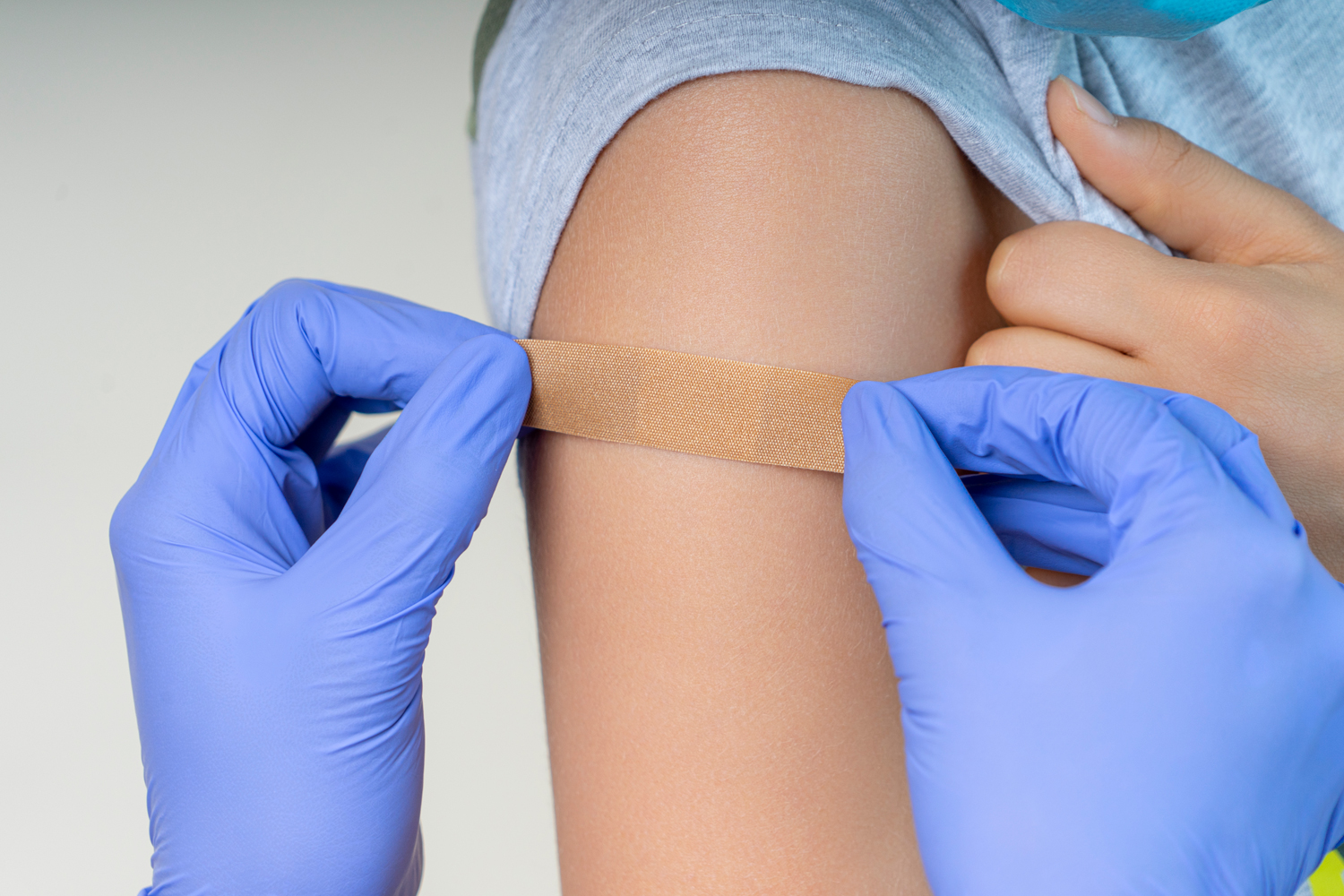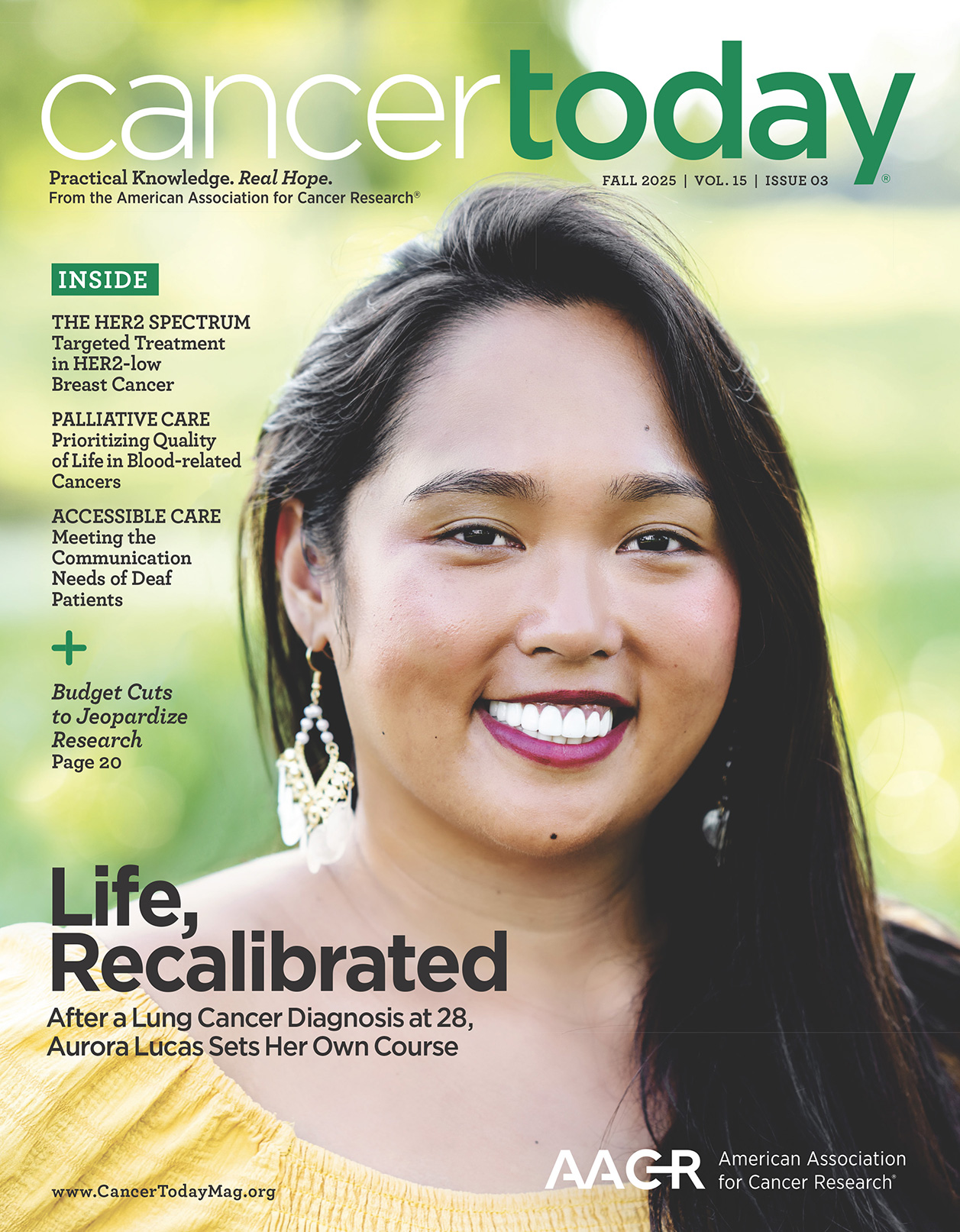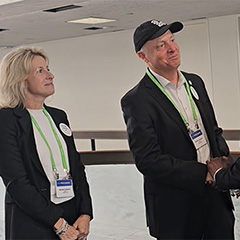Every week, the editors of Cancer Today magazine bring you the top news for cancer patients from around the internet. Stay up to date with the latest in cancer research and care by subscribing to our e-newsletter.
One Dose of HPV Vaccine Works as Well as Two
A single dose of a human papillomavirus (HPV) vaccine provides similar protection from the disease as two doses, according to results of the ESCUDDO trial presented at the American Association for Cancer Research (AACR) Annual Meeting 2025 in Chicago. (The AACR publishes Cancer Today.) HPV infection causes more than 90% of cervical cancer cases and is also a precursor for anal, vaginal, vulvar, penile and throat cancers. Currently the Centers for Disease Control and Prevention recommend schedules of two or even three doses of an HPV vaccine, but getting multiple doses to people can be difficult and expensive, especially in places with limited resources. The ESCUDDO trial enrolled more than 20,000 girls 12 to 16 years old and randomized them into four groups. One group received one dose of the Cervarix HPV vaccine and another received two doses. Similarly, one group was offered a single dose of the Gardasil 9 vaccine and another group received two doses. Study participants were monitored every six months for five years to determine antibody levels and the rate of cervical HPV infection, MedPage Today reported. After five years, infection with two variants of HPV was comparable whether the girls had one or two doses of the vaccines, and vaccine efficacy exceeded 97% in both groups. “A global single-dose HPV vaccine recommendation should facilitate and accelerate country introductions and vaccine update,” said Aimée Kreimer, a researcher at the National Cancer Institute, in her presentation of the study results. “It really is high uptake of HPV vaccines that is going to control these diseases.”
Cancer Rates Are Rising for People Under 50, but Not for All Cancer Types
Early-onset cancers, those occurring in people under 50, are rare but growing in number in the U.S. To find out which cancers are increasing the fastest, researchers from the National Cancer Institute looked at more than 2 million cancers diagnosed in people 15 to 49 years old between 2010 and 2019. They found that 14 out of 33 cancer types showed increasing rates in at least one of the younger age groups. Women were affected more, accounting for 63% of the early-onset cancers. In the study, published May 8 in Cancer Discovery, researchers compared actual rates of cancer in 2019 with what would have been expected based on 2010 rates. Breast, colorectal, kidney, uterine and testicular cancer showed larger than expected increases over the study period. “Several of these cancer types are known to be associated with excess body weight and so one of the leading hypotheses [for faster growth rates] is increasing rates of obesity,” Meredith Shiels, a researcher at the National Cancer Institute and the study’s lead author, said in an Associated Press story. Other possible causes include better cancer detection and changes in cancer screening guidelines. Incidence rates are going down in the 15-to-49 age group for other types of cancer, including lung and prostate cancer, the study revealed.
Veterans’ Cancer Care Affected by VA Budget Cuts
Veterans’ access to treatments for cancer and other ailments through clinical trials at Veterans Affairs (VA) hospitals is in jeopardy due to staffing cuts and suddenly ended contracts, according to a story reported in ProPublica. Internal emails obtained by ProPublica reveal that VA doctors and other officials from around the country have complained to VA headquarters about cuts harming veterans’ care. In Pennsylvania, VA officials claimed in one of the emails that budget cuts would lead to “severe and immediate impacts” that included access to “life-saving cancer trials.” The email continued, “Enrollment in clinical trials is stopping, meaning veterans lose access to therapies.” And while the VA has reversed some of the cuts, others could lead to disruptions in care, according to VA emails. The VA, which employs more than 500,000 people, has said it plans to eliminate at least 70,000 jobs through layoffs and voluntary buyouts in the coming months, though only a few thousand employees have been laid off so far, ProPublica reported. Despite the cuts, a White House budget proposal calls for a 4% increase in the VA’s budget. The VA cares for more than 9 million veterans in 170 hospitals and nearly 1,200 clinics nationwide.
Cancer Today magazine is free to cancer patients, survivors and caregivers who live in the U.S. Subscribe here to receive four issues per year.





